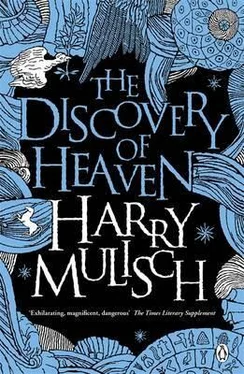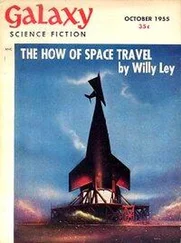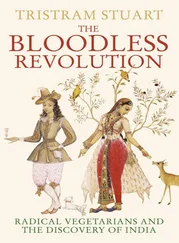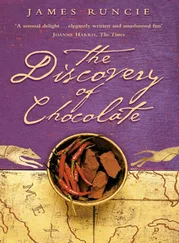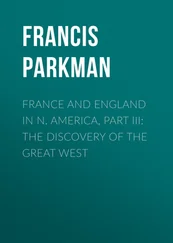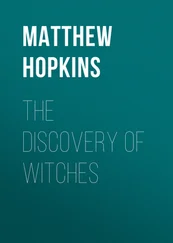The sacred domain exuded the atmosphere of the Carceri, which Mr. Themaat had shown him, Piranesi's endless dungeons, but at the same time that of his dream — and all of it now tightly compressed in an oblong pattern. He bent down and looked through the famous keyhole of the gate. In the distance, exactly along the axis of a long, carefully trimmed hedge of laurel trees, one could see the cupola of St. Peter's. Yes, of course. For many people that was "the center of the world," but not for him.
He was about to wave to his father, but when he saw him sitting there on the other side with his stick, like a homeless alcoholic who ate out of trash cans, he checked himself. The abandoned square lay in the subdued light of the spring sun. Destiny had finally brought them together, but now it had happened, it was as if he had more contact with the stones of Rome than with his father. Even in the evenings in the Via del Pellegrino they said little, and never spoke about the past; all of that was somehow on the other side of a barrier that neither of them wanted to surmount. And yet he knew for certain that they had to stay together, like two companions who were at each other's mercy.
They looked at each other. There was something remorseless about that boy, thought Onno. Something inhuman. A touch of interstellar coldness.
On the Piazza Venezia a policeman in a white helmet was directing the traffic with such fascinatingly immaculate body language that Onno was reminded of his theory of the physicality of power. But so as not to let himself be intimidated, he himself raised his gnarled stick in the air at the edge of the pavement and, laughing all the while, they made their way to the other side through the stream of speeding cars, as if through a trumpeting, stampeding herd of elephants. A few minutes later they had descended into the silent pit of the past.
The Forum Romanum, the extended strip of white and reddish-brown ruins, fragments, and pieces, weeds, pillars broken in two, boulders, holes, remains of walls, all crushed by the flat hand of time, presented Onno with a gloomy image of his own life — but it had an entirely different effect on Quinten. The area caused a strange agitation in him, such as other boys might feel at an air show, when formations of jet fighters swooped low overhead. Again it reminded him of the Citadel, but now of what remained in his memory after he awoke. He was getting close to something; somewhere, something was waiting for him! But where? What was it? By the edge of the open cellar the traffic roared along the Via dei Fori Imperiali; on the other side rose the somber, threatening slope of the Palatine, where the imperial palaces had stood; the sun revolved around the column of Phocas and for hour after hour they wandered through the delicate ruins.
After the frothy lightness of Venice, which floated like a cork on the water, and after the massive reticence of Florence, the things here were so heavy that they had sunk many feet deep into the ground. As he listened to Onno, with the guidebook of the Istituto Poligrafico dello Stato in his left hand, the index finger of his right hand on the page, the stones ordered themselves before Quinten's eyes, tugging and shifting. Comitium. Regia. An ugly, badly proportioned brick building, which obscured the triumphal arch of Septimus Serverus and definitely needed clearing away, suddenly turned out to be the Curia, the Roman senate; according to the guidebook, the original bronze doors were in the basilica of the Lateran.
"What's the Lateran?" he asked.
"In the Middle Ages the popes lived there, before they moved to the Vatican."
"We have to go there too."
"Of course," said Onno. "Anything you say. It's not far — over there, behind the Colosseum. The original palace no longer exists, though."
With each step they took along the great stones of the Via Sacra, the Holy Way, the Forum was in a different century. Every broken column, Onno told him, every fragment of brickwork, every piece of marble that lay in the sun on the dry grass had been constantly pushed backward and forward in time in thousands of publications, until it had been assigned its place in history: the beginning of the millennium, third century A.D., sixth century B.C, Renaissance, medieval. A monstrous ruin, which Quinten had taken for something from the Second World War, suddenly turned out to be the basilica of Maxentrus. The three remaining columns of the temple of Vespasian, with a fragment of architrave still on them: Onno pointed to it with his hand, and said it was the perfect logo for classical antiquity. The round temple of Vesta cut vertically in two and half blown away by time. The triumphal arch of Titus, which spanned the Via Sacra at its highest point, opposite the Colosseum.
Onno pointed out to Quinten a frieze in the tunnel of the arch, which depicted the return of Titus's triumphant troops from Jerusalem, after the conquest of the city in A.D. 70. Titus was the son of the emperor Vespasian, whom he succeeded a few years later. Despite the damage, the relief was a masterly depiction of the soldiers, marching into the Forum along the same street where they were now standing, full of movement and as if the music and hurrahs could still be heard, above their heads the trophies from the destroyed Jewish temple: the silver trumpets, the golden table for the shew-bread, the golden, seven-branched candelabra.
"What's shewbread?"
"A sacrifice," said Onno. "Twelve round unleavened loaves, in two piles of six. They were replaced every Sabbath and the old ones were then eaten by the priests. You find the same thing in Christianity in a different form. Christ said that he was holy bread himself."
"Really? Did he say he was made of bread? Then I suppose he had to be eaten too?"
"That's right. It's still the climax of the Catholic mass."
"But then the Catholics are cannibals!"
"That's what your grandfather always said, but cannibals eat people, while the Catholics regard themselves as God-eaters."
"Perhaps it's something like that with cannibals too."
"Quite possibly. But because the Catholics ultimately only eat bread, not people, they're more like sublimated cannibals — or perhaps one should say transubstantiated cannibals. The strange thing, though, is that you don't find that magic eating-of-the-god figure in Judaism. That seems to derive from Egypt, from the cult of Osiris, who by the way also rose from the dead. In the temple of Jerusalem the only other sacrifices were lambs, and Christ said that he was also a sacrificial lamb. Besides that, he compares his own body with the temple itself."
"The building obviously made a big impression."
"You could say that."
If the Pantheon was an image of the cosmos, thought Quinten, the temple of Jerusalem was obviously an image of man. Together they were everything.
"And the candelabra?"
"That was the Jews' holiest object. The menorah. God told Moses personally how it should be made."
"And the Romans simply took it away with them?"
"As you can see. Though it's not quite accurately depicted here, but for some reason Israel chose this version as its state symbol."
Quinten looked at the thing, which was almost the same height as he was.
"Where is it now?"
"No one knows. Probably stolen, by the Vandals in the fifth century. They were a Germanic tribe that had founded a state of its own in North Africa. That's where our word vandals comes from." As he said it, he suddenly felt a great surge of weariness.
Separate capitals, flagstones, worn steps, inscriptions, caves. . wildcats everywhere, stalking each other. Once this had been the center of the world, thought Quinten, to which all roads led, not only Titus's road from Jerusalem, but now his own from Westerbork too — but that was something different than the center of the world. Or not? He stopped on the other side of the Forum by the "black stone," Lapis Niger.
Читать дальше
